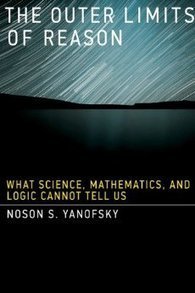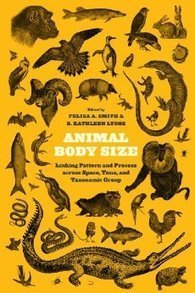Time Reborn: a new theory of time - a new view of the world
Is it possible that time is real, and that the laws of physics are not fixed? Lee Smolin, A C Grayling, Gillian Tett, and Bronwen Maddox explore the implications of such a profound re-think of the natural and social sciences, and consider how it might impact the way we think about surviving the future.




Counterfactuals and Causal Models: Introduction to the Special Issue
Judea Pearl won the 2010 Rumelhart Prize in computational cognitive science due to his seminal contributions to the development of Bayes nets and causal Bayes nets, frameworks that are central to multiple domains of the computational study of mind. At the heart of the causal Bayes nets formalism is the notion of a counterfactual, a representation of something false or nonexistent. Pearl refers to Bayes nets as oracles for intervention, and interventions can tell us what the effect of action will be or what the effect of counterfactual possibilities would be. Counterfactuals turn out to be necessary to understand thought, perception, and language. This selection of papers tells us why, sometimes in ways that support the Bayes net framework and sometimes in ways that challenge it.
Sloman, S. A. (2013), Counterfactuals and Causal Models: Introduction to the Special Issue. Cognitive Science, 37: 969–976.
http://dx.doi.org/10.1111/cogs.12064




Limited Urban Growth: London's Street Network Dynamics since the 18th Century
We investigate the growth dynamics of Greater London defined by the administrative boundary of the Greater London Authority, based on the evolution of its street network during the last two centuries. This is done by employing a unique dataset, consisting of the planar graph representation of nine time slices of Greater London's road network spanning 224 years, from 1786 to 2010. Within this time-frame, we address the concept of the metropolitan area or city in physical terms, in that urban evolution reveals observable transitions in the distribution of relevant geometrical properties. Given that London has a hard boundary enforced by its long standing green belt, we show that its street network dynamics can be described as a fractal space-filling phenomena up to a capacitated limit, whence its growth can be predicted with a striking level of accuracy. This observation is confirmed by the analytical calculation of key topological properties of the planar graph, such as the topological growth of the network and its average connectivity. This study thus represents an example of a strong violation of Gibrat's law. In particular, we are able to show analytically how London evolves from a more loop-like structure, typical of planned cities, toward a more tree-like structure, typical of self-organized cities. These observations are relevant to the discourse on sustainable urban planning with respect to the control of urban sprawl in many large cities which have developed under the conditions of spatial constraints imposed by green belts and hard urban boundaries.
Masucci AP, Stanilov K, Batty M (2013) Limited Urban Growth: London's Street Network Dynamics since the 18th Century. PLoS ONE 8(8): e69469.
http://dx.doi.org/10.1371/journal.pone.0069469




Controlling Self-Organizing Dynamics on Networks Using Models that Self-Organize
Controlling self-organizing systems is challenging because the system responds to the controller. Here, we develop a model that captures the essential self-organizing mechanisms of Bak-Tang-Wiesenfeld (BTW) sandpiles on networks, a self-organized critical (SOC) system. This model enables studying a simple control scheme that determines the frequency of cascades and that shapes systemic risk. We show that optimal strategies exist for generic cost functions and that controlling a subcritical system may drive it to criticality. This approach could enable controlling other self-organizing systems.
Controlling Self-Organizing Dynamics on Networks Using Models that Self-Organize
Pierre-André Noël, Charles D. Brummitt, and Raissa M. D’Souza
Phys. Rev. Lett. 111, 078701 (2013)
http://dx.doi.org/10.1103/PhysRevLett.111.078701
Selected for a Viewpoint
http://physics.aps.org/articles/v6/90




A Network Extension of Species Occupancy Models in a Patchy Environment Applied to the Yosemite Toad (Anaxyrus canorus)
A central challenge of conservation biology is using limited data to predict rare species occurrence and identify conservation areas that play a disproportionate role in regional persistence. Where species occupy discrete patches in a landscape, such predictions require data about environmental quality of individual patches and the connectivity among high quality patches. We present a novel extension to species occupancy modeling that blends traditional predictions of individual patch environmental quality with network analysis to estimate connectivity characteristics using limited survey data. We demonstrate this approach using environmental and geospatial attributes to predict observed occupancy patterns of the Yosemite toad (Anaxyrus (= Bufo) canorus) across >2,500 meadows in Yosemite National Park (USA). A. canorus, a Federal Proposed Species, breeds in shallow water associated with meadows. Our generalized linear model (GLM) accurately predicted ~84% of true presence-absence data on a subset of data withheld for testing. The predicted environmental quality of each meadow was iteratively ‘boosted’ by the quality of neighbors within dispersal distance. We used this park-wide meadow connectivity network to estimate the relative influence of an individual Meadow’s ‘environmental quality’ versus its ‘network quality’ to predict: a) clusters of high quality breeding meadows potentially linked by dispersal, b) breeding meadows with high environmental quality that are isolated from other such meadows, c) breeding meadows with lower environmental quality where long-term persistence may critically depend on the network neighborhood, and d) breeding meadows with the biggest impact on park-wide breeding patterns. Combined with targeted data on dispersal, genetics, disease, and other potential stressors, these results can guide designation of core conservation areas for A. canorus in Yosemite National Park.
Berlow EL, Knapp RA, Ostoja SM, Williams RJ, McKenny H, et al. (2013) A Network Extension of Species Occupancy Models in a Patchy Environment Applied to the Yosemite Toad (Anaxyrus canorus). PLoS ONE 8(8): e72200.
http://dx.doi.org/10.1371/journal.pone.0072200




Complexity Theory and the Social Sciences: The state of the art (by David Byrne, Gillian Callaghan)

For the past two decades, ‘complexity’ has informed a range of work across the social sciences. There are diverse schools of complexity thinking, and authors have used these ideas in a multiplicity of ways, from health inequalities to the organization of large scale firms. Some understand complexity as emergence from the rule-based interactions of simple agents and explore it through agent-based modelling. Others argue against such ‘restricted complexity’ and for the development of case-based narratives deploying a much wider set of approaches and techniques. Major social theorists have been reinterpreted through a complexity lens and the whole methodological programme of the social sciences has been recast in complexity terms.
In four parts, this book seeks to establish ‘the state of the art’ of complexity-informed social science as it stands now, examining: (1) the key issues in complexity theory; (2) the implications of complexity theory for social theory; (3) the methodology and methods of complexity theory and (4) complexity within disciplines and fields.
It also points ways forward towards a complexity-informed social science for the twenty-first century, investigating the argument for a post-disciplinary, ‘open’ social science. Byrne and Callaghan consider how this might be developed as a programme of teaching and research within social science. This book will be particularly relevant for, and interesting to, students and scholars of social research methods, social theory, business and organization studies, health, education, urban studies and development studies.




The Why of Things: Causality in Science, Medicine, and Life (by Peter V. Rabins)

Why do some people get cancer and not others? Why is global warming happening? Why does one person get depressed in the face of life's vicissitudes while another finds resilience?
Questions like these -- questions of causality -- form the basis of modern scientific inquiry, posing profound intellectual and methodological challenges for researchers in the physical, natural, biomedical, and social sciences. In this groundbreaking book, noted psychiatrist and author Peter Rabins offers a conceptual framework for analyzing daunting questions of causality. Navigating a lively intellectual voyage between the shoals of strict reductionism and relativism, Rabins maps a three-facet model of causality and applies it to a variety of questions in science, medicine, economics, and more.
Throughout this book, Rabins situates his argument within relevant scientific contexts, such as quantum mechanics, cybernetics, chaos theory, and epigenetics. A renowned communicator of complex concepts and scientific ideas, Rabins helps readers stretch their minds beyond the realm of popular literary tipping points, blinks, and freakonomic explanations of the world.




The Outer Limits of Reason: What Science, Mathematics, and Logic Cannot Tell Us (by Noson S. Yanofsky)

Many books explain what is known about the universe. This book investigates what cannot be known. Rather than exploring the amazing facts that science, mathematics, and reason have revealed to us, this work studies what science, mathematics, and reason tell us cannot be revealed. In The Outer Limits of Reason, Noson Yanofsky considers what cannot be predicted, described, or known, and what will never be understood. He discusses the limitations of computers, physics, logic, and our own thought processes.
Yanofsky describes simple tasks that would take computers trillions of centuries to complete and other problems that computers can never solve; perfectly formed English sentences that make no sense; different levels of infinity; the bizarre world of the quantum; the relevance of relativity theory; the causes of chaos theory; math problems that cannot be solved by normal means; and statements that are true but cannot be proven. He explains the limitations of our intuitions about the world -- our ideas about space, time, and motion, and the complex relationship between the knower and the known.
Moving from the concrete to the abstract, from problems of everyday language to straightforward philosophical questions to the formalities of physics and mathematics, Yanofsky demonstrates a myriad of unsolvable problems and paradoxes. Exploring the various limitations of our knowledge, he shows that many of these limitations have a similar pattern and that by investigating these patterns, we can better understand the structure and limitations of reason itself. Yanofsky even attempts to look beyond the borders of reason to see what, if anything, is out there.




Animal Body Size: Linking Pattern and Process across Space, Time, and Taxonomic Group (by Felisa A. Smith, S. Kathleen Lyons)

Galileo wrote that “nature cannot produce a horse as large as twenty ordinary horses or a giant ten times taller than an ordinary man unless by miracle or by greatly altering the proportions of his limbs and especially of his bones”—a statement that wonderfully captures a long-standing scientific fascination with body size. Why are organisms the size that they are? And what determines their optimum size? This volume explores animal body size from a macroecological perspective, examining species, populations, and other large groups of animals in order to uncover the patterns and causal mechanisms of body size throughout time and across the globe. The chapters represent diverse scientific perspectives and are divided into two sections. The first includes chapters on insects, snails, birds, bats, and terrestrial mammals and discusses the body size patterns of these various organisms. The second examines some of the factors behind, and consequences of, body size patterns and includes chapters on community assembly, body mass distribution, life history, and the influence of flight on body size.




Handbook of Human Computation: Pietro Michelucci

This volume addresses the emerging area of human computation, The chapters, written by leading international researchers, explore existing and future opportunities to combine the respective strengths of both humans and machines in order to create powerful problem-solving capabilities. The book bridges scientific communities, capturing and integrating the unique perspective and achievements of each. It coalesces contributions from industry and across related disciplines in order to motivate, define, and anticipate the future of this exciting new frontier in science and cultural evolution. Readers can expect to find valuable contributions covering Foundations; Application Domains; Techniques and Modalities; Infrastructure and Architecture; Algorithms; Participation; Analysis; Policy and Security and the Impact of Human Computation. Researchers and professionals will find the Handbook of Human Computation a valuable reference tool. The breadth of content also provides a thorough foundation for students of the field.




The Power of Networks | World Economic Forum 2012
Nowadays, any organization should employ network scientists/analysts who are able to map and analyse complex systems that are of importance to the organization (e.g. the organization itself, its activities, a country’s economic activities, transportation networks, research networks).
Interconnectivity is beneficial but also brings in vulnerability: if you and I are connected we can share resources; meanwhile your problems can become mine and vice versa.
The concept of “crystallized imagination” refers to things that are first in our head and then become reality. This concept can be turned into network applied research on economic complexity of a country’s economic activities and development prospects.




When Power Goes To Your Head, It May Shut Out Your Heart

If your boss is a jerk, there might be a scientific reason for it. A new study suggests feeling powerful dampens the part of the brain that helps us connect with others.
It turns out, feeling powerless boosted the mirror system — people empathized highly. But, Obhi says, "when people were feeling powerful, the signal wasn't very high at all." So when people felt power, they really did have more trouble getting inside another person's head.
"What we're finding is power diminishes all varieties of empathy," says Dacher Keltner, a social psychologist at University of California, Berkeley, not involved in the new study. He says these results fit a trend within psychological research.
by CHRIS BENDEREV




No hay comentarios:
Publicar un comentario